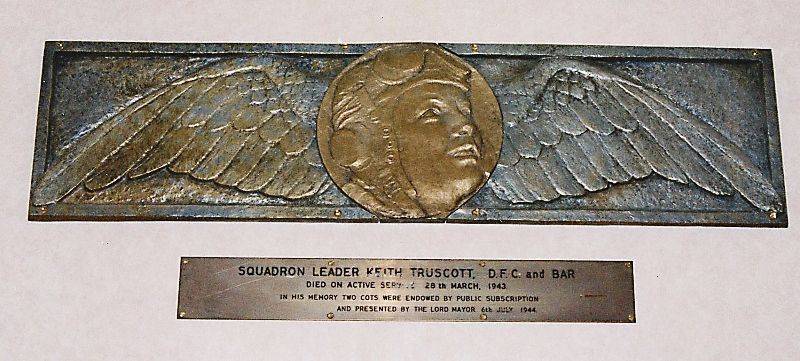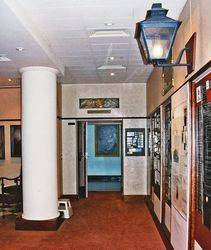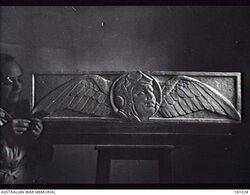
Squadron Leader Keith TruscottPrint Page 
Bluey Truscott became one of Australia's best-known flying aces of the Second World War. Born on 17 May 1916 at Prahran, Melbourne, he proved to be both a good student and keen sportsman, playing Australian Rules for Melbourne's premiership team in 1939.
Already famous as a footballer, Truscott enlisted in the RAAF on 21 July 1940 amidst considerable publicity. Despite his sporting reputation, Truscott was not a natural pilot and almost failed his course. His position as something of a public figure afforded Truscott a chance to continue flying and he eventually earned his wings despite becoming known for his poor landings.
He was sent to Canada under the Empire Air Training Scheme, was commissioned in February 1941, and then ordered to England, where he joined No. 452 Squadron as a foundation member on 5 May. Flying a Spitfire, he scored his first victory in August. Thereafter, his score began a gradual rise. After three months of war flying, he had destroyed at least 11 German aircraft, was awarded the Distinguished Flying Cross, and made a flight commander. In January 1942 he was made acting squadron leader before being posted back to Australia in March. Late that month he was awarded a bar to his Distinguished Flying Cross. At that point he was the most well-known pilot in the RAAF.
Truscott was on a training flight over the Exmouth Gulf in Western Australia on 28 March 1943 when he made a mock attack on a low-flying Catalina. Misjudging his height over the glassy water, Truscott crashed into the sea and was killed.
A bronze plaque in memory of the late Squadron-Leader Keith ("Bluey") Truscott. D.F.C., was unveiled today at the Children's Hospital by the Lord Mayor (Cr. Nettlefold). The name of Truscott would be perpetuated in Australia's future history, Cr. Nettlefold said. The tablet, which would be placed in the Truscott Memorial Ward and later transferred to the new building, when constructed, would be a reminder of the great part this gallant airman played in the defence of the British Empire and Australia. "Bluey" Truscott had had a brilliant career, and was intensely admired by all. In this appeal. £2073 had been raised as a tribute from his fellow sportsmen.
Accepting the gift, the president of the Hospital (Lady Latham) said the tablet would keep alive in children's minds the gallant deeds of this young man. The sculptress (Mrs Tina Wentscher) had captured the expression of courage and joy in a lovely piece of work. One minute's silence was observed by those present, among whom were his parents Mr and Mrs Truscott, the Lady Mayoress (Mrs Edward Campbell), the president of the Melbourne Football Club and chairman of the Memorial Committee (Mr J. C. Blair), the secretary of the Melbourne Cricket Club (Mr V. S. Ransford), the secretary of the Victorian Football League (Mr McBrien. M.L.C.) and representatives of the Army and RAAF.
Location
| Address: | 50 Flemington Road, Research Room, Royal Children`s Hospital, Parkville, 3052 |
|---|---|
| State: | VIC |
| Area: | AUS |
| GPS Coordinates: | Lat: -37.794275 Long: 144.949314 Note: GPS Coordinates are approximate. |
Details
| Monument Type: | Plaque |
|---|---|
| Monument Theme: | People |
| Sub-Theme: | Military |
| Artist: | Mrs Tina Wenscher |
| Link: | http://adb.anu.edu.au/ |
Dedication
| Actual Monument Dedication Date: | Thursday 6th July, 1944 |
|---|
Squadron Leader Keith Truscott D.F.C. and Bar
Died on active service 28th March, 1943
In his memory two cots were endowed by public subscription and presented by the Lord Mayor
6h July 1944.







